índice
I. Introduction
Introduction to the Diversity of Terrestrial Orchids
Terrestrial orchids are a fascinating category of plants that stand out for their diversity and uniqueness. In this section, we will explore the richness of these extraordinary flowers, delving into the unique characteristics that make them so special.
When we take a closer look at terrestrial orchids, we are overwhelmed by an impressive variety of shapes, colors and patterns. Their unique adaptations set them apart in the plant kingdom, making them true works of nature’s art. On this journey, we will explore these distinct characteristics that make terrestrial orchids so captivating.
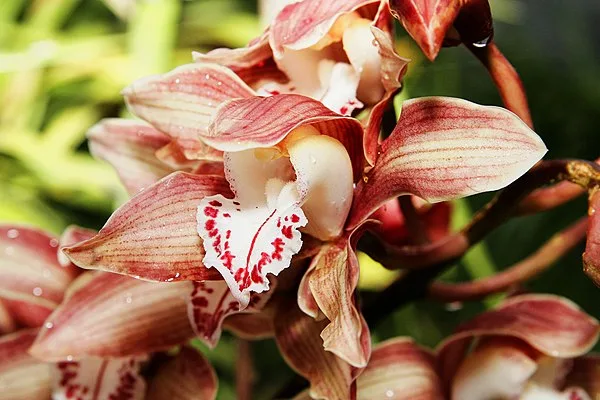
II. The World of Terrestrial Orchids
In this section, we will enter the fascinating universe of terrestrial orchids, revealing the diversity of species and their unique peculiarities.
Exploring Different Species
Discover the variety of terrestrial orchids and marvel at the multiplicity of shapes, sizes and colors that these stunning flowers present. Each species has distinct characteristics, from the structure of the petals to the intricate patterns on their surfaces.
Peculiarities and Adaptations
Delve into the peculiarities of these remarkable plants by exploring their incredible adaptations to the environment. Terrestrial orchids have developed unique strategies to survive and thrive, making them true champions of botanical evolution.
Natural Habitat
Get to know the natural habitat where these orchids thrive. From tropical rainforests to areas of low vegetation, terrestrial orchids demonstrate an incredible ability to adapt to a variety of environments. Let’s unravel the mysteries of their places of origin and understand how they integrate harmoniously into these diverse ecosystems.
III. 5 Terrestrial Orchid Species
In this section, we’ll explore five fascinating terrestrial orchid species, highlighting their unique characteristics, intriguing origins and essential care for growing them successfully.
1. Paphiopedilum spicerianum
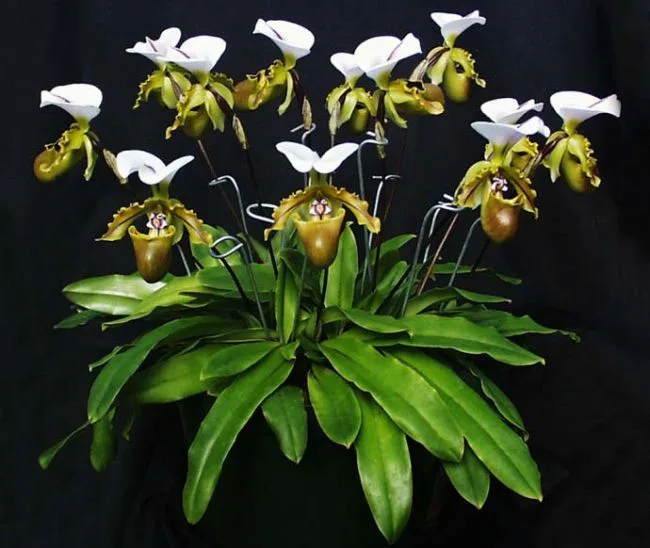
Characteristics: This terrestrial orchid is known for its exotic flowers in shades of green and brown. Its petals have a peculiar shape, resembling the silhouette of a ballerina. The leaves are robust and slightly variegated.
Origin: Originally from the forests of Southeast Asia, Paphiopedilum spicerianum is found in shady and humid places, where it adapts well to the soil conditions.
Care: Maintain a substrate rich in organic matter, watering moderately and ensuring good drainage. Avoid direct sunlight, providing a shaded and humid environment.
2. Calypso bulbosa
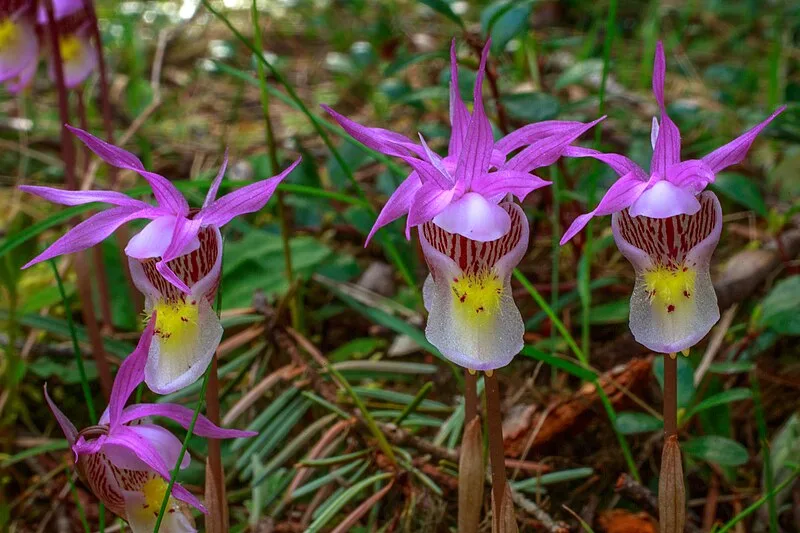
Characteristics: Calypso bulbosa stands out for its small, vibrant flowers, usually in shades of pink and purple. Its leaves are rounded and have an intense green hue.
Origin: Found in regions with a temperate climate, such as the forests of northern North America and Eurasia, Calypso bulbosa prefers well-drained, shaded soils.
Care: Grow in cool, shady places, watering regularly to keep the soil moist but not soggy. Avoid direct exposure to strong sunlight.
3. Bletia purpurea
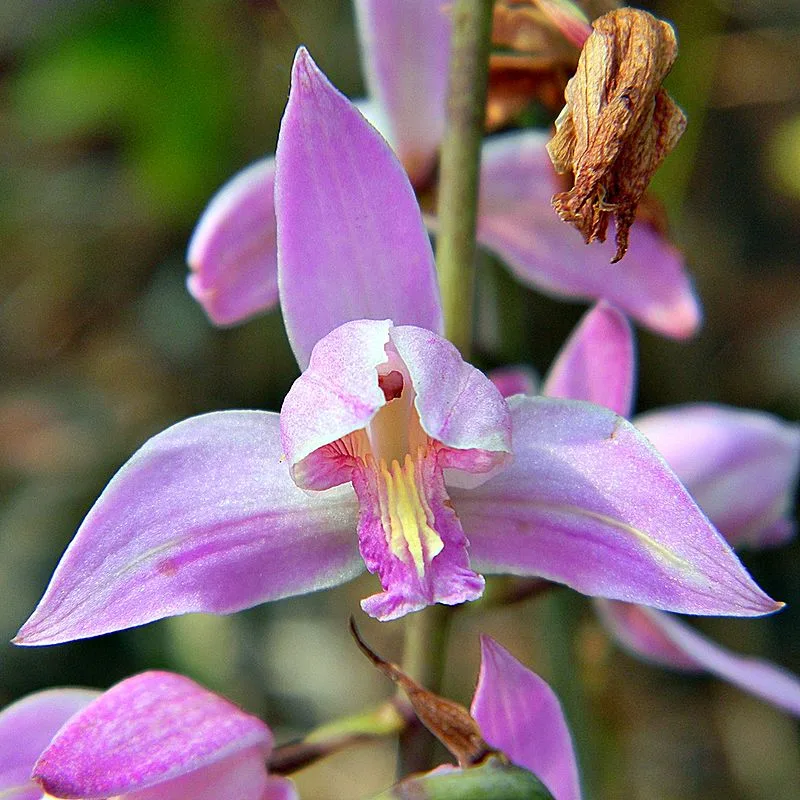
Characteristics: With its pink and purple flowers, Bletia purpurea is an impressive terrestrial orchid. Its leaves are lanceolate and have a striped pattern.
Origin: Native to Central and South America, this species thrives in areas with a tropical and subtropical climate and is often found in woodlands and on riverbanks.
Care: Grow in well-drained soil, watering regularly during periods of active growth. Provide partial shade and avoid extreme temperatures.
4. Cymbidium erythraeum
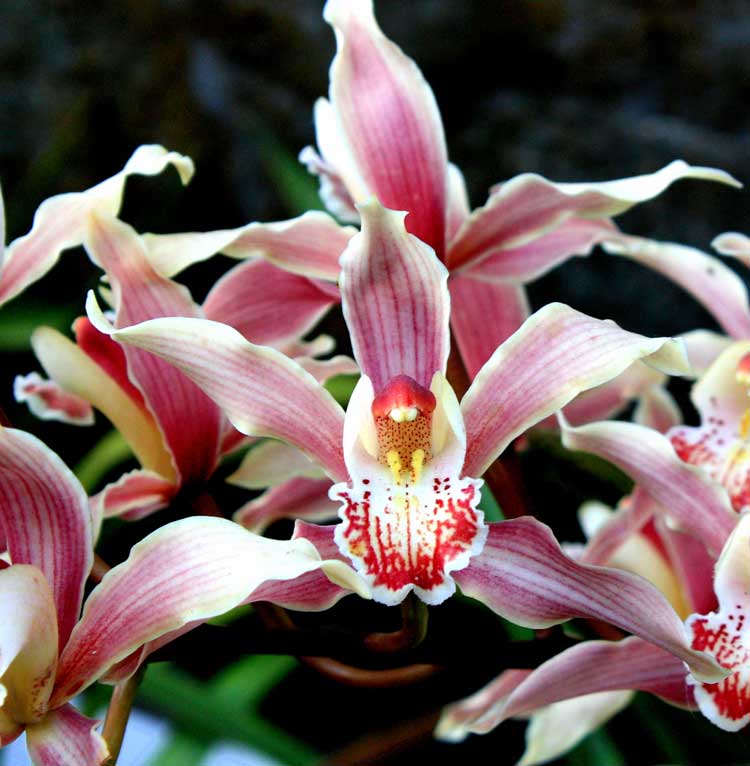
Characteristics: Known for its large, showy flowers in shades of white, pink, yellow and green, Cymbidium erythraeum is a terrestrial orchid with long, arching leaves.
Origin: Native to the mountainous regions of the Himalayas, China and Southeast Asia, this species thrives at higher altitudes where temperatures are milder.
Care: Grow in a well-drained substrate, providing filtered light. Water moderately and avoid very high temperatures, ensuring a rest period during the winter.
5. Dracula vampira
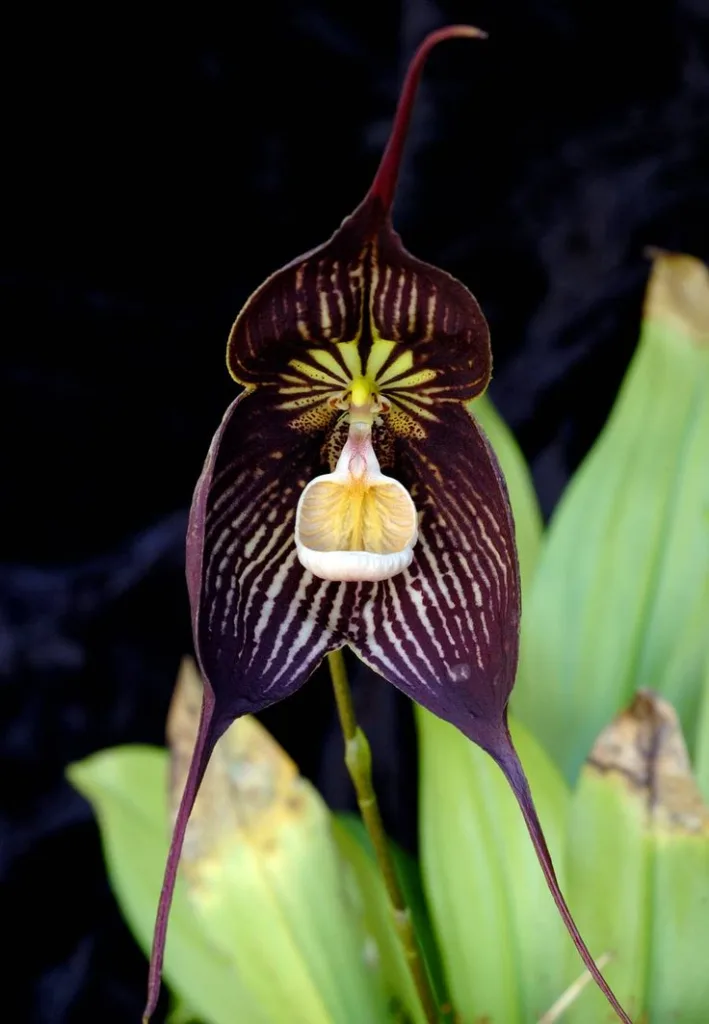
Characteristics: This terrestrial orchid is known for its exotic flowers that resemble bats, hence the name Dracula vampira. Its colors vary from brown to red and its leaves are small and lance-shaped.
Origin: Found in the humid, shady forests of the Andean regions of South America, Dracula vampira thrives at higher altitudes.
Care: Grow in a substrate rich in organic matter, maintaining a humid and cool environment. Avoid direct sunlight and water regularly during periods of active growth.
IV. Conclusion
Recap of Key Points
Throughout this exploration into the fascinating world of terrestrial orchids, we have highlighted the unique characteristics of various species, their intriguing origins and the care required for successful cultivation. We recall the diversity of shapes, colors and adaptations that make these flowers truly special.
Encouraging the Cultivation and Appreciation of Terrestrial Orchids
We conclude this journey with a passionate invitation to cultivate and appreciate terrestrial orchids. In addition to their stunning beauty, these plants offer a unique opportunity to connect with nature, allowing botanical enthusiasts and gardeners to appreciate the diversity of terrestrial flora.
By cultivating terrestrial orchids, we contribute not only to the preservation of these species, but also to the creation of vibrant and lush environments. May this dive into the nuances of these magnificent plants have inspired you to bring some of the wonder of terrestrial orchids to your own green space.
Let’s celebrate the richness of nature and continue exploring the wonders that the botanical kingdom offers us. Growing terrestrial orchids is more than a hobby; it’s a way of honoring the diversity of life and nurturing a deeper connection with our environment. Embrace the magic of terrestrial orchids and let their beauty flourish in your garden and in your heart.
Frequently Asked Questions
Which Orchids Can I Plant in the Ground?
Several orchid species are classified as terrestrial, including Paphiopedilum spicerianum, Calypso bulbosa, Bletia purpurea, Cymbidium erythraeum, and Dracula vampira. Each one has distinct characteristics, adapting to different environments and offering a wide range of options for terrestrial orchid enthusiasts to explore in their gardens.
How to care for a terrestrial orchid?
Caring for terrestrial orchids involves paying attention to the substrate, moderate watering and a suitable environment. Maintain well-drained soil, avoid direct sunlight and water as necessary, adjusting care according to the specific needs of each species. Monitoring environmental conditions is crucial to ensuring healthy cultivation.
Which orchids are terrestrial?
For successful cultivation in soil, terrestrial orchids such as Paphiopedilum, Calypso bulbosa, Bletia purpurea, Cymbidium erythraeum, and Dracula vampira are excellent choices. These species thrive in suitable substrates, offering a unique opportunity to appreciate their beauty in the garden.







